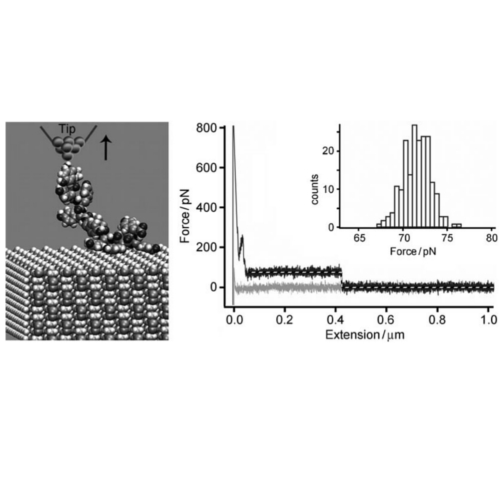Adsorption Mechanism of Polypeptides and Their Location at Hydrophobic Interfaces
09-Nov-2009
Chem Phys Chem, 2009, doi:10.1002/cphc.200900574, published on 09.11.2009
Chem. Phys. Chem., online article
Chem. Phys. Chem., online article
The adhesion of polypeptides and proteins at interfaces is important for a wide variety of systems—from the adhesion onto vessels during their production process over functional coatings to protein–membrane interactions in single cells. Herein, we apply an atomic-force-microscopy-based single-molecule method and poly-D-tyrosine to determine the adhesion strength and location of polypeptides at interfaces. Surprisingly, the support (solid, liquid or gas) hardly influences the adhesion in an aqueous environment, while the addition of ethanol to the solvent cuts the adhesion in half. These findings allow us to propose that the adsorbed polypeptide spans over both the depletion layer and the hydrophobic hydration layer to facilitate a compensation mechanism between dispersive and hydration forces.











